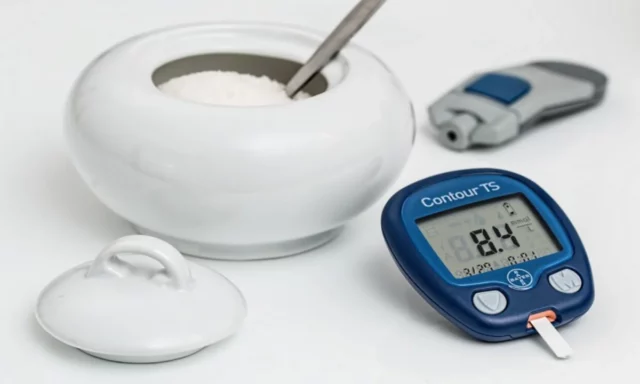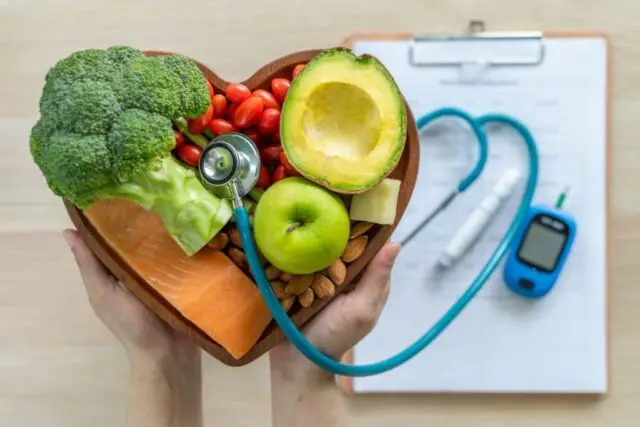Glucose is the most important fuel we have for our body because from it we extract the energy we need to move, think, or make our heart beat. In other words, it is essential for our vital functions.
But if that level of glucose (that is sugar in the blood) is not adequate, it can cause us serious health problems. Diabetes is a chronic metabolic disease characterized by elevated blood glucose levels. And over time it leads to serious damage to the heart, blood vessels, eyes, kidneys and nerves. The most common variant is type 2 diabetes, usually in adults; it occurs when the body becomes resistant to insulin or does not produce enough insulin.
Millions of people with diabetes in the Americas
It is estimated that 62 million people throughout the American continent live with type 2 diabetes, says the Pan American Health Organization (PAHO). This number has tripled in the region since 1980 and is estimated to reach the 109 million mark by 2040, according to the Diabetes Atlas. The prevalence of the disease increased more rapidly in low- and middle-income countries than in high-income countries.
Last November 14th, World Diabetes Day, we asked: what are the foods we should eat -and what not- to help keep blood sugar levels regulated? To find out the answer, we spoke with Clara Eugenia Pérez Gualdrón, vice president of the Latin American Diabetes Association (ALAD) and associate professor at the Faculty of Medicine of the National University of Colombia.
Why do you have to keep blood sugar levels regulated?
You would think that if you eat sugar, your blood glucose goes up, but this is not the case. We have a hormonal deregulatory enzyme complex that keeps glucose at ideal levels 24 hours a day. But it is important to keep it regulated. That is to say, neither go up much nor go down excessively. That is the problem that patients with diabetes often have.
If one has very high glucose for long periods of time, it produces toxins in the body that over time damage the body, such as small and large blood vessels.
Diabetes with chronic hyperglycemia
A diabetic patient with chronic hyperglycemia can lose, for example, the function of the eyes and kidneys, and could even be amputated. They are the chronic complications of diabetes. And if the blood sugar level is very low, that can lead to the death of the patient in a matter of seconds. So it is not good to have it too high or to have it too low.
In diabetes we have cut-off points to know healthy glucose levels. For example, it is known that in a fast -for a period of 6 to 8 hours- we must have glucose around 100 or less. And after eating, it should not go above 140. If that mark is passed, then there is some kind of problem.

Are there foods that help regulate blood sugar level?
There is a pattern of healthy eating. There are foods that help glucose to be regulated and others that, on the contrary, prevent it from being regulated.
The healthy eating pattern has 3 fundamental components:
1. Consume fruits and vegetables.
2. Eliminate foods concentrated in sugar.
3. Decrease foods that contain a lot of saturated fat and replace them with those that contain monounsaturated fats.
The foods that we can consume that regulate glucose very well are those rich in fiber, such as wheat bran. In addition, you have to consume a lot of liquid. That is the roadmap.
What are those fruits and vegetables and how much should we eat?
Eat as much vegetables as you can. We never abuse vegetables. However, we do abuse the fruit. And this happens especially in Latin America, because the region is rich in fruit trees. The fruit must be eaten in portions. The recommendation to the patient is the 3-2 formula: 2 servings of fruit a day and 3 servings of vegetables. Or the other way around: 3 fruit and 2 vegetables.
Generally, as our diet in Latin America is constituted, we include fruit at breakfast. At midmorning, we eat fruit. And in the middle of the afternoon, we eat fruit again, while vegetables would be located at lunch and dinner.
The secret is to eat vegetables of 3 different colors in the portion. This is how the body is nourished with a complex of vitamins, minerals or microelements that those foods bring. Sometimes one is monothematic and starts eating bananas, bananas and bananas. It is the fruit most chosen by the Latino. But the banana precisely has a greater amount of sugar than the other fruits.
Most of the fruits are 10% glucose. That is to say, that in 100 grams of a fruit, 10% of it is glucose. There are others that are 20%, like bananas. And there are others that are 5% like tangerines; that is to say, if one eats 4 tangerines it is as if one ate 1 banana in proportion of sugar.

Healthy eating pattern
To help regulate blood sugar level:
•Consume fruits and vegetables
•Eliminate foods concentrated in sugar
•Reduce foods that contain a lot of saturated fat and replace them with those that contain monounsaturated fat.
Source: Clara Eugenia Pérez Gualdrón, vice president of the Latin American Diabetes Association (ALAD)
What are the foods that concentrate a lot of sugar?
In many places, coffee with milk is eaten for breakfast and sugar is added. You have to eliminate that sugar that we add. When a patient says “Uh, but this coffee is so bitter!”, so I recommend a replacement: the sweetener.
That sweetener can be caloric or non-caloric. Using a caloric sweetener implies that glucose will rise. Therefore, a non-caloric sweetener is recommended. However, the evidence shows that non-caloric sweeteners impair the gastrointestinal flora. And it has 3 important impacts on the body.
Coffee with milk
Do you drink coffee with milk: with sugar, sweetener or alone? GETTY IMAGES
The intestinal flora serves for the body’s immunity, to regulate body weight and to favor the production of neurotransmitters that are associated with happiness, so that one feels good. As I tell my students, many remain fat, sad, and have the flu. Why? Because they do not have bacteria since they eliminate them with the non-caloric sweetener.
Many of the soft drinks are sweetened with non-caloric sweeteners that destroy our gastrointestinal flora. They are also into high consumption of sugary liquids, such as juices. There is a classic example for this: which is sweeter: a strawberry or a potato? Most people will answer that a strawberry.
But which of the 2 has more sugar?
Well, 100 grams of strawberry have 5% sugar. And 100 grams of potatoes, or a large potato, have 20% sugar. If you make a juice, you make the sugar in the strawberry soluble, so you absorb it more quickly. So, the strawberry is better to eat whole. While if you eat the whole cooked potato it will take a while to digest it, so your blood sugar will not rise as quickly.
There is what I call hygiene of eating habits. This is eating accompanied, at your hours, seated and with the amount of chewing that is needed. If I chew the potato, after 15 minutes satiety signals reach the brain.
And what are saturated fats?
You have to decrease saturated fat and increase monounsaturated fat. For this you have to use olive oil. In the countries of the southern cone it is consumed a lot, but in other regions of Latin America it is not.
Instead of consuming olive oil, they are using the subcutaneous tissue of the pig or chicken. That is, melt your skin. In many regions it is called lard (not to be confused with butter). That is saturated fat. Any fat that is solid at room temperature has a large saturated fatty acid component.
And that, in high concentration in our blood, makes insulin not work well. If the insulin does not work well, it automatically raises the blood sugar level. Conversely, around 20 milliliters of olive oil a day is an ideal fat intake. That fat makes your life work better. And therefore, the glucose level is reduced.
What should a diabetic eat and what not?
You should eat more fruits and vegetables, and fewer foods that are high in sugar. You also have to avoid sugary liquids and consume positive fat like the one in olive oil. That fat is also found in nuts and fish from cold, deep sea waters.
But, in addition to food, it is essential to walk, walk and walk. If you exercise, ride a bike, skate, swim, it is fine. But at least walk more than 7,000 steps a day.
You have to abandon the hours of sitting. What kills one is the chair, since it is a silent enemy. If you spend 8 hours a day sitting down, start cutting that down by half or a third. You can start working standing or walking and try to move. That is something that one can implement; this complex nutritional plan must necessarily be accompanied by physical activity, and that will make you feel much better.

And the glass of wine is bad for the level of glucose in the blood?
Drinking moderately positively impacts the cardiovascular system. If one drinks a glass of wine a day it doesn’t hurt. On the contrary, it does much good. Wine has a large number of chemicals that positively alter health.
The problem is that most of us, Latin Americans, do not consume wine like in southern Latin America, where 1 or 2 glasses a day are taken with meals. The bad is the accumulated. For example, if on Saturday one drinks all the glasses of wine for the week together. So it is not recommended to drink alcohol.
But the patient with diabetes who is harmed by drinking wine is one who has hypertriglyceridemia-type dyslipidemia, because alcohol in the liver favors the construction of new triglycerides that, eventually, can harm the patient with diabetes.
Is there any other factor that helps us regulate our glucose?
Another very important thing is the hours of sleep. Sometimes the dream feeds more than the diet itself. How to do to improve the quality of sleep? Well, practicing physical activity every day. If you follow all these steps, you will see that everything will be fine.

